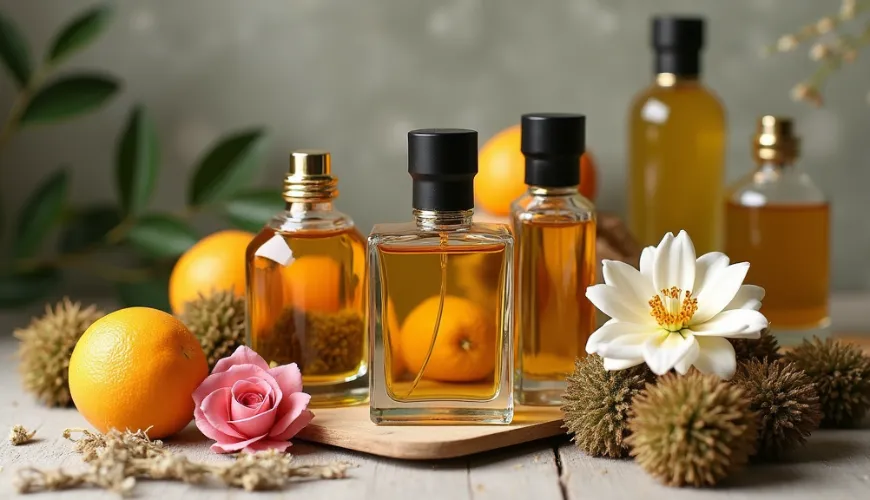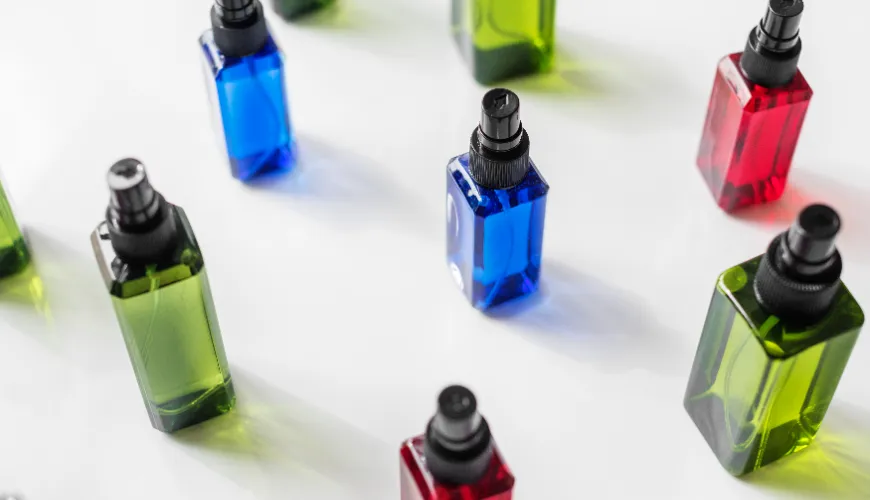
How to Identify a Chypre Fragrance When Choosing a Perfume and What to Expect from It

The Secret of Chypre: Why Scents from Cyprus Continue to Fascinate the Perfume World
When you hear the word "chypre," most people probably won’t think of anything specific. The word sounds exotic, perhaps even mysterious. Yet, it is one of the most influential and iconic perfume styles that has shaped modern perfumery as we know it today. But what exactly does chypre fragrance mean? And why does this mysterious term have a French name after the Mediterranean island of Cyprus?
The answers to these questions reveal not only the rich history of perfumes but also the way our olfactory preferences evolve hand in hand with culture, memories, and personal identity.
What is a Chypre Fragrance?
The term chypre (pronounced "sheep-ra") comes from French and literally means "Cyprus." This island was historically known for its production of fragrant resins, herbs, and citrus fruits – the ingredients that became the foundation of what we now know as a chypre fragrance.
In the perfume world, however, the term chypre does not refer to a specific ingredient but to a characteristic structure of scent. This is typically composed of three key pillars:
- Citrus top – often bergamot, sometimes mandarin or lemon
- Floral and woody heart – such as rose, jasmine, or patchouli
- Earthy base – oakmoss, vetiver, labdanum, or musk
The result is a fragrance that is sophisticated, deep, and sometimes even dark, with a dry, powdery finish. Chypre scents are not usually straightforwardly sweet or fruity. On the contrary, their charm lies in the complexity and elegance that cannot be easily categorized.
A History that Began with a Revolution
Although certain chypre accords were known in ancient times, the true perfume genre originated in 1917 when the legendary Parisian perfume house Coty introduced a fragrance with the simple name Chypre. This composition became so fundamental that it began to denote an entire olfactory category.
Chypre by Coty was both revolutionary and timeless – combining fresh bergamot with heavier oakmoss and labdanum, creating an entirely new direction in the world of scents. At a time when sweet and powdery perfumes were popular, the chypre fragrance appeared as a revelation. It particularly appealed to women who sought unconventional, confident, and intellectual perfumes.
In the following decades, a series of iconic chypre perfumes emerged – such as Mitsouko by Guerlain (1919), Miss Dior by Christian Dior (1947), or Cristalle by Chanel (1974). Each of these fragrances pushed the genre further and demonstrated its variability. Chypre could be floral, green, fruity, but it always retained its sophisticated framework.
Why Does Chypre Continue to Attract Us?
People who love chypre scents often say there is something addictive about them – as if their aroma slowly unfolds, hiding secrets that are revealed only after a while. Perhaps it is precisely this dynamic between freshness and depth that makes chypre fragrances so exceptional. Unlike other perfume styles, chypre cannot be easily described in a few words. It's more of an atmosphere, a mood, a feeling.
A typical example might be the story of Anna, who in her thirties bought a perfume with a chypre character for the first time. Until then, she had used rather light floral and citrus scents. But when she discovered chypre, she felt she had found "the scent of her adulthood." She says: "Suddenly, I felt that this fragrance said something. Not just about me, but about where I was heading. It wasn't straightforward, but it had depth. It was the fragrance of a woman who knows herself."
Modern Chypre and Changing Formulations
Today, we often encounter the term "modern chypre." The reason is primarily the gradual restriction or ban of certain traditional ingredients, especially oakmoss, due to potential allergenicity. Today's perfumers are thus seeking alternatives – whether synthetic molecules or other natural ingredients – that can maintain the chypre character but comply with current regulations.
The result is fragrances that are lighter, airier, sometimes even transparent, yet still carry that typical "chypre signature." Among current modern chypre scents are Narciso Rodriguez For Her, Bottega Veneta Eau de Parfum, or niche fragrances like Portrait of a Lady by Frederic Malle.
Although purists may argue that "it's not the true chypre," most experts agree that the style lives on – it just keeps evolving.
Who Will Appreciate Chypre Scents?
Chypre fragrances are generally considered sophisticated, sometimes even intellectual. They don't suit everyone – and that's precisely their strength. People who love chypre often seek fragrances with character, depth, and long-lasting wear. They don't look for cheap allure but authenticity and originality.
At the same time, chypre is not bound by gender – although historically associated more with women's perfumes, it is now common in men's or unisex compositions. After all, the famous Pour Monsieur by Chanel bears a clear chypre signature.
How to Recognize a Chypre Fragrance When Choosing a Perfume?
When you're interested in whether a perfume belongs to the chypre category, there's no need to immediately study complex descriptions on labels or websites – it's more valuable to engage your own nose and intuition. When you first smell it, try to think: does the scent start with a fresh citrus breath but then subtly transition into something drier and deeper? A sensation that no longer feels light but more grounded and mature?
Perhaps it hides a touch of the forest – a hint of moss, a touch of wood, or a smoky undertone reminiscent of an old book or an autumn walk under the trees. A typical feature of chypre fragrances is their changeability over time, so if you notice that each subsequent hour on the skin smells different from when you applied it, you're likely on the right track. And if, with your eyes closed, you transport not to a flower bed but somewhere deep into the woods, where leaves crunch underfoot and the air smells of earthy moisture, then you have a great chance of holding a perfume with a true chypre character in your hand.
If you answer "yes" to at least two of these questions, it's quite possible you have a chypre fragrance in front of you.
Chypre in Natural and Sustainable Perfumery
With the growing interest in natural ingredients and sustainable cosmetics, chypre fragrances are gaining a new dimension. Many natural perfumers are turning to this style because it allows for the use of a wide range of botanical extracts – from citrus oils to herbal tones to resins and mosses.
In the natural perfume offerings, we can find chypre variants that contain no synthetic ingredients, are not tested on animals, and are produced with ecological considerations. Such fragrances appeal not only to the nose but also to the conscience – once again showing that chypre is not just an old-fashioned relic but a living and current style.
As perfumer Patricia de Nicolaï said: "Chypre is like a well-written book – it has a beginning, middle, and end. And when you finish it, you want to return to it again."
Perhaps that is why chypre fragrances do not lose their strength even more than a hundred years after their inception. They are like a mysterious landscape that cannot be known in a single day – but once discovered, one falls in love with it.

